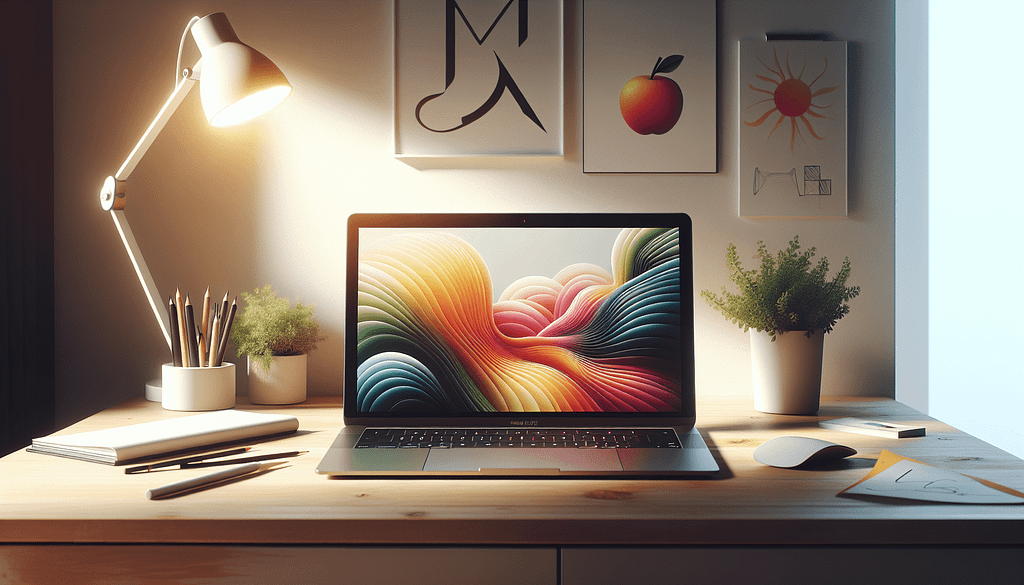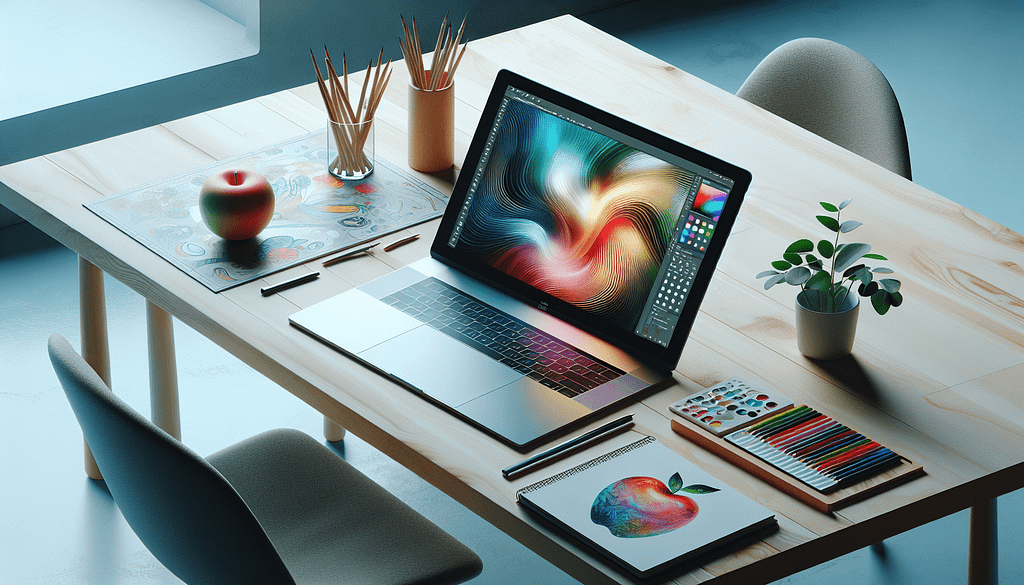Why Aren’t MacBooks Touchscreen? Apple’s Design Philosophy
Why are MacBooks not touchscreen? Discover Apple’s design philosophy that prioritizes simplicity and user experience over trendy tech features in this insightful read.
Why Aren’t MacBooks Touchscreen? Apple’s Design Philosophy
You may have found yourself pondering why Apple hasn’t introduced touchscreen capabilities to its MacBook line. After all, the iPad has seamlessly integrated touch functionality, and laptops from other brands boast slick touchscreens that allow for versatile interaction. It’s an interesting question, and the answer lies in the depths of Apple’s design philosophy and vision for user experience. Let’s take a closer look at why MacBooks remain steadfastly non-touchscreen.

Understanding Touchscreen Technology
To appreciate why MacBooks aren’t touchscreens, you first need to delve into the world of touchscreen technology itself. Touchscreens come in different varieties, each designed to interpret touch input in its own manner. Capacitive touchscreens, like those used in iPhones and iPads, sense the electric charge from your fingers, while resistive screens react to pressure. This diversity means touchscreens can be both flexible and complex.
You might wonder — why isn’t this technology readily applied to MacBooks? After all, incorporating such features could empower new creative interactions. However, Apple’s consistent design philosophy might suggest that ease of use and functionality triumph over adding another layer of complexity, especially if it may not enhance the user experience.
Apple’s Design Philosophy
At the heart of Apple’s decision-making process is a design philosophy centered on simplicity, elegance, and intuitive usability. When you pick up a MacBook, it becomes apparent that Apple is keenly focused on producing a device that caters to efficiency and productivity. The firm believes that no tool should be overcomplicated or laden with features that detract from its purpose.
This commitment to usability is why menus are straightforward, icons are easily recognizable, and workflows are streamlined. By keeping the user experience consistent, Apple helps users focus on their tasks without the initiative to learn how to interact differently, which could easily happen with a touchscreen interface.
The MacBook Experience
When you use your MacBook, you engage in a unique typing experience facilitated by the trackpad and keyboard. The two work in harmony, allowing fluid navigation and multi-touch gestures that enhance your interaction. These gestures include pinch-to-zoom and swipe-to-navigate, which are already designed for efficiency.
One could argue that incorporating a touchscreen could muddle this experience. Would you touch the screen, then revert to using the trackpad and clicking the keyboard? Such a switch may not be seamless and could lead to frustration rather than convenience. Apple likely considers maintaining a clear boundary between laptop and tablet functionalities an essential part of the MacBook’s identity.
The Importance of Ergonomics
Let’s think ergonomics for a moment. It’s a great buzzword, but there is good reason to talk about the layout of your workspace. If you type on your MacBook at a desk, your hands are positioned comfortably within reach of both the keyboard and trackpad. A touchscreen interface, when severely angled, demands a different posture, which may lead to strain and discomfort with prolonged use.
Think about it this way: when you use your iPad, you don’t generally hold it at waist level for long periods while scrolling through Instagram (though, let’s be honest, it happens!). Instead, you often find yourself leaning over or cradling it in your arms. That isn’t the most ideal position for typing or extensive work. By opting to avoid touchscreen capabilities, Apple ensures that your MacBook remains an ergonomic-friendly device.

Touchscreen and Operating System Differences
You’ve noticed that Apple’s laptops run macOS while their tablets operate on iPadOS. This distinction matters greatly as each operating system is designed for its respective hardware. Desktop environments, like what you find in macOS, focus on multi-window tasks and complex interactions that often require precise navigation.
Apple’s decision to stick to its core macOS functionality illustrates that multitasking on a Mac doesn’t favor touch input. When you are dealing with a multitude of applications, you need precise control that a stylus or keyboard provides rather than the sometimes imprecise nature of touch interaction. So, in a way, the operating system’s focus naturally influences how Apple approaches hardware design.
The iPad Influence
Now, let’s take a step back and talk about the iPad. This device has become the poster child for touchscreen technology. Apple has cultivated a massive ecosystem around iPads, ensuring they fulfill the expectation of touch interaction. The iPad blends tablet and laptop functionalities quite nicely, which could potentially lead to some confusion regarding the need for touch capability on MacBooks.
If Apple were to introduce a touchscreen MacBook, it might cause customers to grapple with which device suits their needs best. This could dilute the clear lines that define the MacBook as a premium laptop and the iPad as a versatile tablet. By keeping these devices distinct, Apple harnesses the benefits of both worlds while minimizing internal competition among its products.
User Feedback and Market Trends
Apple consistently engages with its user base and monitors market trends, making sure to give customers what they want. While Android and Windows laptops offer a variety of touchscreen features, customers flock to MacBooks for their unique blend of design, performance, and reliability. Current users typically look for a polished device that performs well for tasks ranging from writing reports to editing videos.
Moreover, Apple listens to the feedback it receives. And through the years, it seems clear that most Mac users haven’t expressed a significant demand for touch functionality. In fact, many prefer the traditional user experience driven by precision trackpads. Should Apple start listening to trends advocating for touchscreen laptops? Perhaps, but the reception thus far demonstrates that the majority are satisfied with their current experience.
The Future of MacBooks
In contemplating the future of MacBooks, it’s essential to think about technological progression and how user habits might evolve. While touchscreen technology is widely accepted in the market, it’s essential to remember that consumer expectations are not always uniform across the board.
You may be eager to see Apple embrace innovative designs, but the company often takes a conservative approach. In doing so, they avoid impulse changes that might destabilize their established user base. If demand for touchscreen MacBooks were to surge and the collective user experience principles aligned with such a direction, things could change.
The Competitive Landscape
We can’t ignore that the competitiveness of the technology industry continues to spur innovation. Brands across the spectrum are rolling out laptops with stunning touchscreen capabilities, bringing forth hybrid models that can transform from laptops to tablets. Users today have many choices, each product claiming to be ‘the future of computing.’
Apple’s stance appears quite deliberate. They firmly believe in matching the right device to the right user experience. By keeping MacBooks free of touchscreens, Apple continues to hone in on its legacy of quality and performance while letting iPads fill the niche for touch input.
Advantages of Non-Touchscreen MacBooks
While you might imagine the advantages of owning a touchscreen laptop, let’s not overlook the benefits of a non-touchscreen MacBook. First and foremost, stability in your workflow becomes a focal point. With a trackpad and keyboard dominating your interaction, you have a reliable means of input without the risk of interruption from unintended touchscreen inputs.
Additionally, by maintaining the integrity of its aluminum design, MacBooks offer durability and sturdiness that touch-sensitive screens often lack. For professionals and creatives who rely on their devices’ longevity, this reliability stands out.
Conclusion: A Final Note on Apple’s Vision
The absence of touchscreen functionality on MacBooks ultimately boils down to Apple’s overarching philosophy on design, user experience, and product integrity. They are dedicated to creating devices that align with a vision of simplicity and harmony in usability. Each detail that’s left out or kept intact builds toward a cohesive experience tailored for the customer.
Don’t be surprised if this debate continues in tech conversations down the line. The world of technology evolves at a dizzying pace, and Apple will always be watching the trends and market responses. Who knows what the future has in store?
If you enjoyed this article and found it insightful, I encourage you to clap for this piece, leave a comment with your thoughts, and subscribe to my Medium newsletter for more updates. Your engagement is always appreciated, and I look forward to sharing more content with you!
from Stories by Casenixx Phone Cases on Medium https://ift.tt/UjItSkT
via IFTTT
Comments
Post a Comment